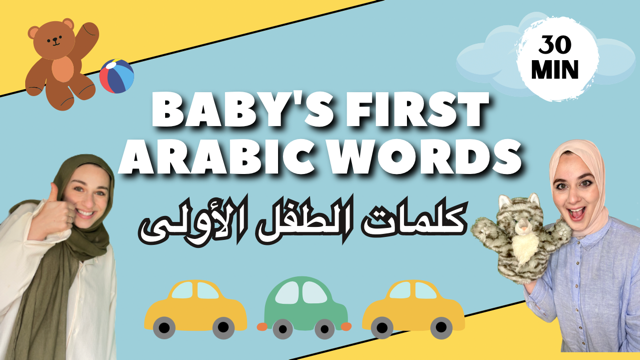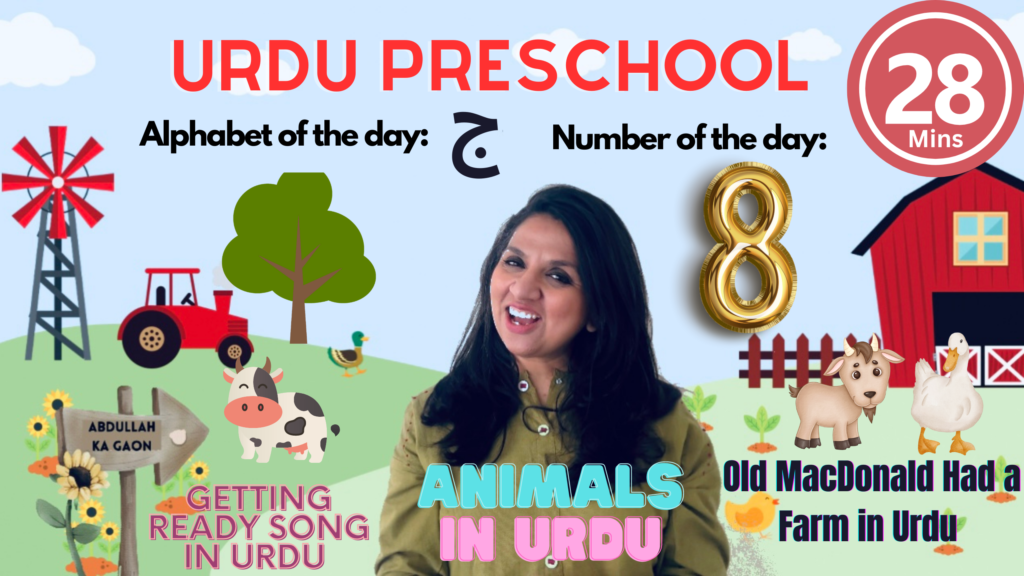Build Vocabulary and Boost Confidence
By Kiran Ansari
Sept/Oct 2023

“If we don’t speak to our children in Urdu, the language can die with us.” This realization hit hard for Nadia Siddiqui from San Jose, Calif. Twenty years ago, there were not many online resources. With no extended family nearby, she was worried that her children – and grandchildren – would not know how to speak their mother tongue if she didn’t put in the effort.
It helped that her husband was also an immigrant from Pakistan. They made it a point to converse in Urdu only and focused on it more than English when their children were young.
“The kids will automatically pick up English from TV and school,” Siddiqui said. “That’s the factory default setting for our North American kids. If we value our mother tongue, then we must put in time to preserve it.”
Mirela Uddin from Algonquin, Ill. made it a point to speak to her children in Bosnian only. She subscribed to a Bosnian language TV channel at home and had the kids Skype with their grandparents regularly. She also spent a couple of months every summer in Bosnia so the children could soak in the language and culture. She believes the Bosnian weekend school and weekly talk in Bosnian at the mosque also helped reinforce the language.

“80-90% of my conversation with my kids is in Bosnian,” Uddin says. “Since my husband is not from Bosnia, and we didn’t have many Bosnian friends here, I knew I had to put in the work.”
Today, her older kids can carry on a conversation in Bosnian. They can order food and converse with the locals. Her daughter even has some Bosnian songs in her playlist. Uddin feels learning an additional language at a young age could have increased their affinity to learn new languages. Her college-aged daughter is also fluent in Spanish.
Siddiqui also took her children to Pakistan regularly. Even though their cousins in Pakistan were encouraged to speak in English, hanging out with extended family and domestic help made a big difference. She started with teaching her children the names of objects in Urdu. Later came stories and the famous “Urdu game” on long car rides and waiting at the doctor’s office. Siddiqui used to say “tree,” or “red,” and the kids would compete to see who could translate in Urdu the fastest. What ensued was a lot of learning – and laughter. After all, keenoo (orange) and konee (elbow) do sound alike.
Enter YouTube and Co.
While Siddiqui didn’t have many resources, parents today can supplement their efforts with online help. Tamania Jaffri in Calgary, Canada has been working tirelessly for the last eight years to preserve the language with her blog, urdumom.com. She loves sharing ideas with families to pass on language and culture to the next generation. Viewers saw her kids grow up on her weekly Urdu story time on Facebook. Recently, she started a YouTube channel called Urdu preschool with familiar rhymes for the littlest ones.


“The response has been amazing,” Jaffri said. “I have years of material based on my experience, and I love taking names of children during the video. Families write to me about how their kids would love to hear their name called out on TV.”
Oregon-mom, Rinad Qutub wanted her children to have educational screen time that helped them learn Arabic. She collaborated with Abrar Shahin from New Jersey and came up with the idea of Kalam Kids after noticing their children responding well to video content. Kalam means words or speech in Arabic. They wanted kids in multilingual households to have access to conversational Arabic.
“The response for our YouTube channel has been overwhelmingly positive,” Qutub said. “Nothing makes us happier than seeing little ones smiling and engaging with our videos.”
Like other languages, there are many dialects in Arabic. “It’s tough to cater to all dialects because even between the two of us, we say words differently,” Shaheen added. “When choosing which words to use, we refer to traditional Arabic.”
Parents – the Best (and Free) Resource
Jaffri believes that the best tool for passing on language is the parent themselves because children model after them. So, a parent who actively speaks the language with their child, and sings/plays/reads in the language is the best resource. Her videos give parents ideas and remind them of poems and stories in Urdu they might have forgotten themselves.
“The most important thing parents can do is to love and respect Urdu,” Jaffri said. “We carry a lot of colonial baggage in our disdain for Urdu and consider English superior. Children are smart and can pick how their parents feel about the language.”
The Kalam Kids ladies agree that a multimodal approach yields the best results. They encourage parents and caregivers to watch and repeat the videos along with their little ones to promote an active learning environment. They stress the importance of including learning a language in the daily routines.
Multilingual Households
Children can learn another language even if their parents don’t speak it. The key is that they continue to practice the concepts with someone who can. Today, thanks to Kids Bolo, that can also be online.
In addition to leveled Urdu-English books, and an innovative Urdu talking pen, the Kids Bolo online Urdu conversational classes have become very popular. They have around 200 kids from the U.S., Canada, U.K, and other countries outside Pakistan enrolled in their monthly subscription model.
“As parents whose children were born in the West, we felt our choice of relevant resources was limited,” said Masooma Aftab from Toronto. “So, my husband Hamid and I leveraged each other’s professional degrees (Finance/Start Up and Early Childhood/Youth Work) and created those resources ourselves.”
In 2020, they launched as “Inglish For Kids” and sold thousands of books. They used that feedback to rebuild the products from scratch and relaunched as Kids Bolo. Their Urdu taking pen has been very popular as it allows kids to read books in Urdu on their own.
“Bilingualism has many cognitive and social benefits,” Aftab said. “Learning your heritage language not only connects you to a larger community but it helps preserve the culture – its mannerisms, dialogue, nuances. To preserve it, you must practice it out loud and increase exposure like being around people where you hear it consistently.”
“This exposure doesn’t need to come from parents. However, it is extremely helpful if the home environment is supportive of language acquisition and participates in the ‘back and forth’ dialogue,” Aftab said. “Dialogue with other children that are at the same learning level does wonders for learning. In many cases, I have seen both the child and parent hone their Urdu language skills together – which is phenomenal as it enhances bonding between generations.”
Hard Work Pays Off
It can feel daunting to introduce a new language. However, it is possible — and rewarding. You could play regular games like Go Fish or Charades, but in the other language. You could also stick flash cards around the house for kids to remember what a clock or table is called in their mother tongue.
A new language can be fun as long as it doesn’t feel like a chore or homework. “Kids learn best and fastest when they are having fun,” said Qutub. “We find that singing songs and implementing language into games and activities is most beneficial. Just be silly and have fun. “Parents do have to put in extra effort at first. Later, they can enjoy seeing their vocabulary increase and how the children gain more confidence in a beloved language. They don’t have to become poets or scholars in the second language. But if a language can bring them closer to grandparents and their heritage, it is worth the effort for future generations as well. It does not have to be perfect. However, with practice and love, it can be well worth it.
Kiran Ansari is the Assistant Editor of Islamic Horizons. Even though her three kids are at different levels of Urdu fluency, she is grateful that they keep trying.
Tell us what you thought by joining our Facebook community. You can also send comments and story pitches to horizons@isna.net. Islamic Horizons does not publish unsolicited material.
